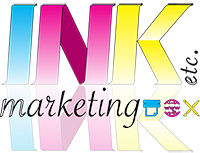Comparing EDDM, Targeted, and Multi-Channel Direct Mail Strategies
The direct mail landscape can often be overwhelming, but let’s bring some clarity to it!
In the world of marketing, direct mail continues to be a powerful tool, offering tangible and personalized communication in an increasingly digital age. Amongst the various strategies employed, Every Door Direct Mail (EDDM), Targeted Direct Mail, and Multi-Channel Direct Mail stand out. Each has unique strengths and limitations in terms of reach, cost, attribution, and response ratios. Let’s delve into these strategies to help marketers make informed decisions.

Every Door Direct Mail (EDDM)
Pros:
1. Broad Reach and Simplified Process: EDDM allows businesses to reach every household or business in a specific area without the need for a mailing list. It’s ideal for local businesses targeting a geographic area without specific demographic criteria.
2. Cost-Effectiveness: Since it doesn’t require purchasing a mailing list and uses a simplified address format, EDDM can be more cost-effective than traditional targeted mailing.
Cons:
1. Lack of Personalization: EDDM does not allow for personalization since it’s not targeted to specific individuals. This can lead to a lower engagement rate.
2. Limited Scope for Precise Targeting: It’s not the best choice for products or services that cater to a specific demographic or niche market.
Expected Outcomes: EDDM is excellent for businesses aiming to increase brand awareness or promote local events or openings. However, the response rates might be lower compared to targeted campaigns, hovering around 0.5% to 2%.
Targeted Direct Mail
Pros:
- Highly Personalized: Targeted mailings can be tailored based on customer data, leading to more relevant and engaging content.
- Better Response Rates: By focusing on a specific audience, these campaigns often yield higher response rates, typically ranging from 3% to 7%.
Cons:
- Higher Costs: The cost per piece can be higher due to the need for purchasing and maintaining mailing lists and creating personalized content.
- Time-Intensive: Developing a targeted campaign requires more time for planning and execution, including research and data analysis.
Expected Outcomes: Targeted direct mail is suitable for businesses looking to reach a specific customer segment with a tailored message. It’s effective for driving conversions and building customer relationships but at a higher cost.
Multi-Channel Direct Mail
Pros:
- Enhanced Engagement: By integrating direct mail with digital channels (like email, social media, and web), multi-channel campaigns create multiple touchpoints, enhancing customer engagement.
- Improved Tracking and Attribution: Digital integration allows for better tracking of responses and attribution to specific mail pieces.
Cons:
- Complexity and Coordination: Executing a coherent multi-channel campaign requires careful planning and coordination across different platforms.
- Higher Costs and Resource Intensive: These campaigns can be more expensive and resource-intensive, demanding expertise in both direct mail and digital marketing.
Expected Outcomes: Multi-channel campaigns can significantly boost engagement and response rates, potentially reaching 7% to 10%. They are effective for businesses looking to create a seamless customer experience across various channels.
Comparative Analysis
- Reach: EDDM offers the broadest reach but with the least precision. Targeted mail has a more refined reach, while Multi-channel strategies, though potentially having a narrower reach, engage the audience more effectively across various platforms.
- Cost: EDDM is generally the most cost-effective, making it accessible for small businesses or those with limited budgets. Targeted mail incurs higher costs due to personalization and data usage. Multi-channel campaigns are the most expensive but offer the potential for the highest return on investment due to their integrated approach.
- Attribution to Mail Piece: EDDM offers minimal attribution capabilities. In contrast, Targeted mail allows for better attribution through personalized tracking, and Multi-channel campaigns offer the most sophisticated attribution, integrating online tracking tools.
- Response Ratios: EDDM typically has the lowest response rates due to its broad and untargeted nature. Targeted direct mail sees improved response rates due to its personalization. Multi-channel campaigns tend to have the HIGHEST RESPONSE RATES as they engage customers through multiple touchpoints and provide a consistent message across channels.
Conclusion
Choosing the right direct mail strategy depends on your business goals, budget, and target audience. EDDM is great for local businesses or broad messages, targeted direct mail is ideal for specific audience engagement, and multi-channel campaigns are best for creating an immersive and integrated customer experience. By understanding the pros and cons of each strategy, marketers can effectively leverage direct mail to achieve their desired outcomes.
Remember, the key to a successful direct mail campaign lies in understanding your audience, crafting a compelling message, and seamlessly integrating your direct mail strategy with your overall marketing plan. Whether you choose EDDM, targeted, or multi-channel.
Are you feeling overwhelmed and unsure of how to achieve your marketing goals? Look no further than Ink Etc Marketing! We’re here to help you succeed and grow your business. Our expert team will work with you to understand your unique marketing needs and recommend the best approach to meet your goals and stand out from the crowd. With our comprehensive services, you’ll be on your way to marketing success in no time. Contact us today and let us help you shine!.
